Studio Developer Generative Research

Conducting Remote & Contextual Interviews
Goal: Refine product strategy by establishing a foundational understanding of our core user groups.
Process: We conducted 1:1 remote and contextual interviews with ~80 users across 10 user groups to characterize what our users think, feel, and do in their day-to-day work.
Outcome: Based on insights from the research, a key feature was added to the product backlog, which eventually helped land an early pioneer customer. In addition to overall product UX improvements, teams across the org including marketing, customer success, and docs used the research insights to enhance their work products.
My Role
- Define strategy with the team
- Manage and drive research, analysis, synthesis, and artifact creation
- Engage, evangelize, and socialize with stakeholders and senior leaders
- Conduct interview sessions as needed
Research Overview
Recruit
Targeted 8-10 users in each of the following groups: Developers/Engineers, QA/SDET, DevOps, Data Scientists, IT Admins, PMs, Security Architects, Release Managers
Recruited for a mix of experience levels, demographic diversity
Representatives of our target verticals, with preference given to automotive, A&D, healthcare
We used a combination of recruiting services and networking to find participants
Session Design
We discussed basic tasks, tools used, team composition
Deeper dive into workflows, collaboration, motivations, KPIs
Highlighted key pain points, needs, and desires
Screen sharing for remote interviews, direct observation for in-person
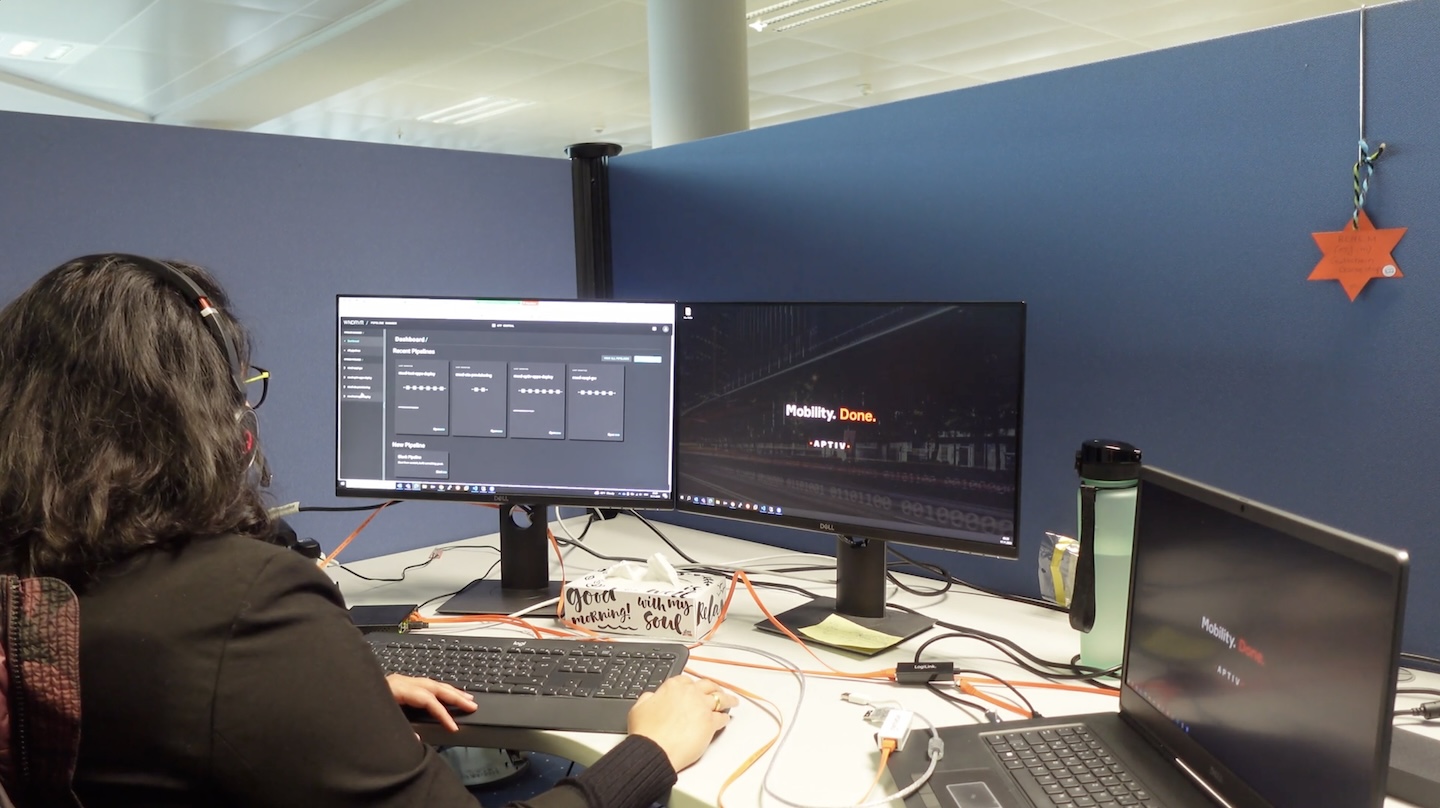
Analysis / Synthesis
Tagged videos/transcripts around themes, connecting them to emergent bigger picture ideas via affinity diagrams
Synthesized motivations, workflows, needs into persona documents, user journeys
Conducted design thinking sessions with cross-functional teams to generate solutions from the insights
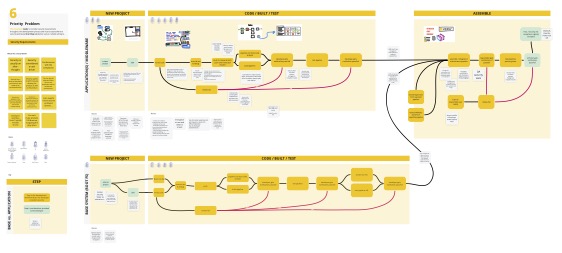
Artifacts & Outcome
I won't share specific insights here, but the research resulted in a more nuanced understanding of "developers" and how they might use our products, as well as specific user needs that our products were uniquely poised to address. We were able to articulate the product strategy in terms of these needs/problems to solve, resulting in a clearer path forward across the organization. Teams from marketing, customer success, and documentation adopted our artifacts in their work, for example, writing documentation specific to each user group rather than a one-size-fits-all approach.
These insights also generated new features for the product backlog, which contributed landing our first pioneer customers.
Finally, this project established research operations where none existed, bootstrapping a participant database, defining cross-functional workflows for future research projects, and establishing a shared research database upon which to build and engage with data over time.
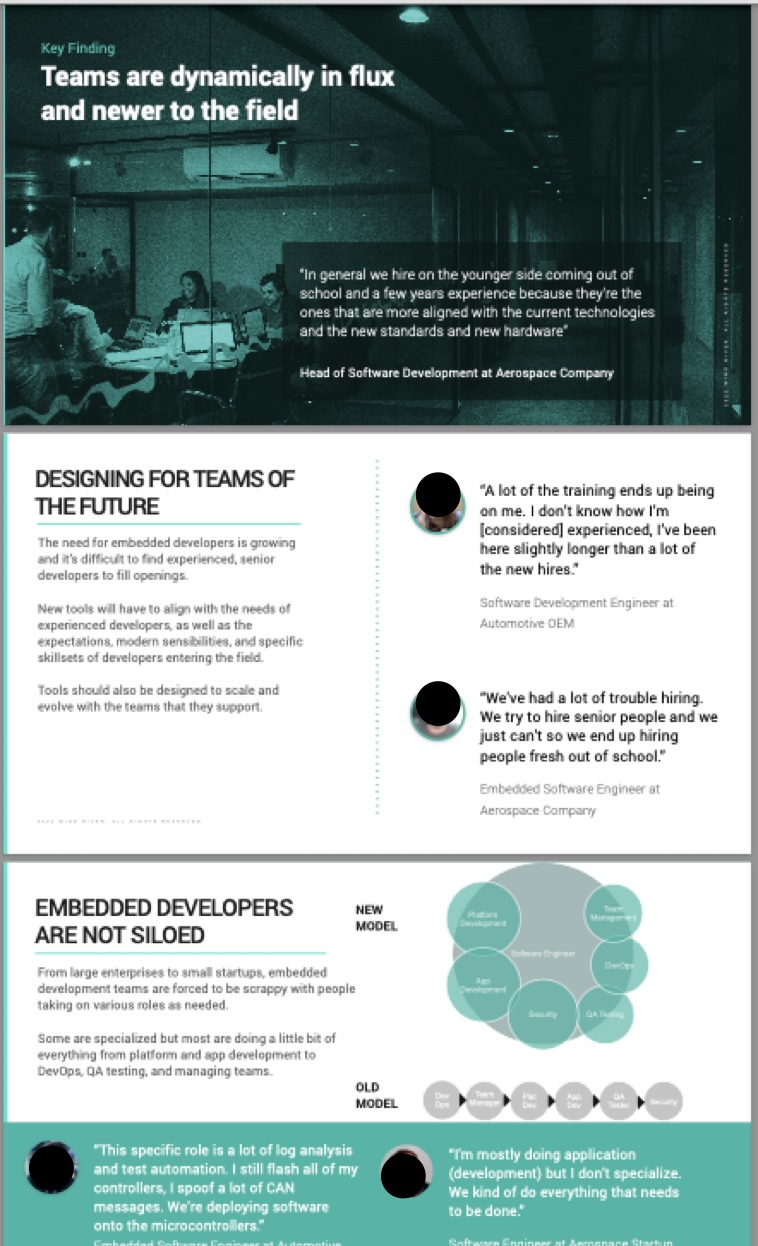
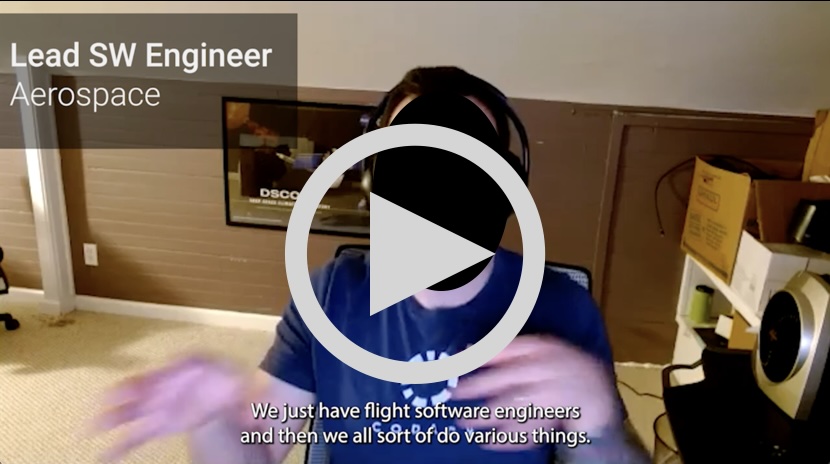
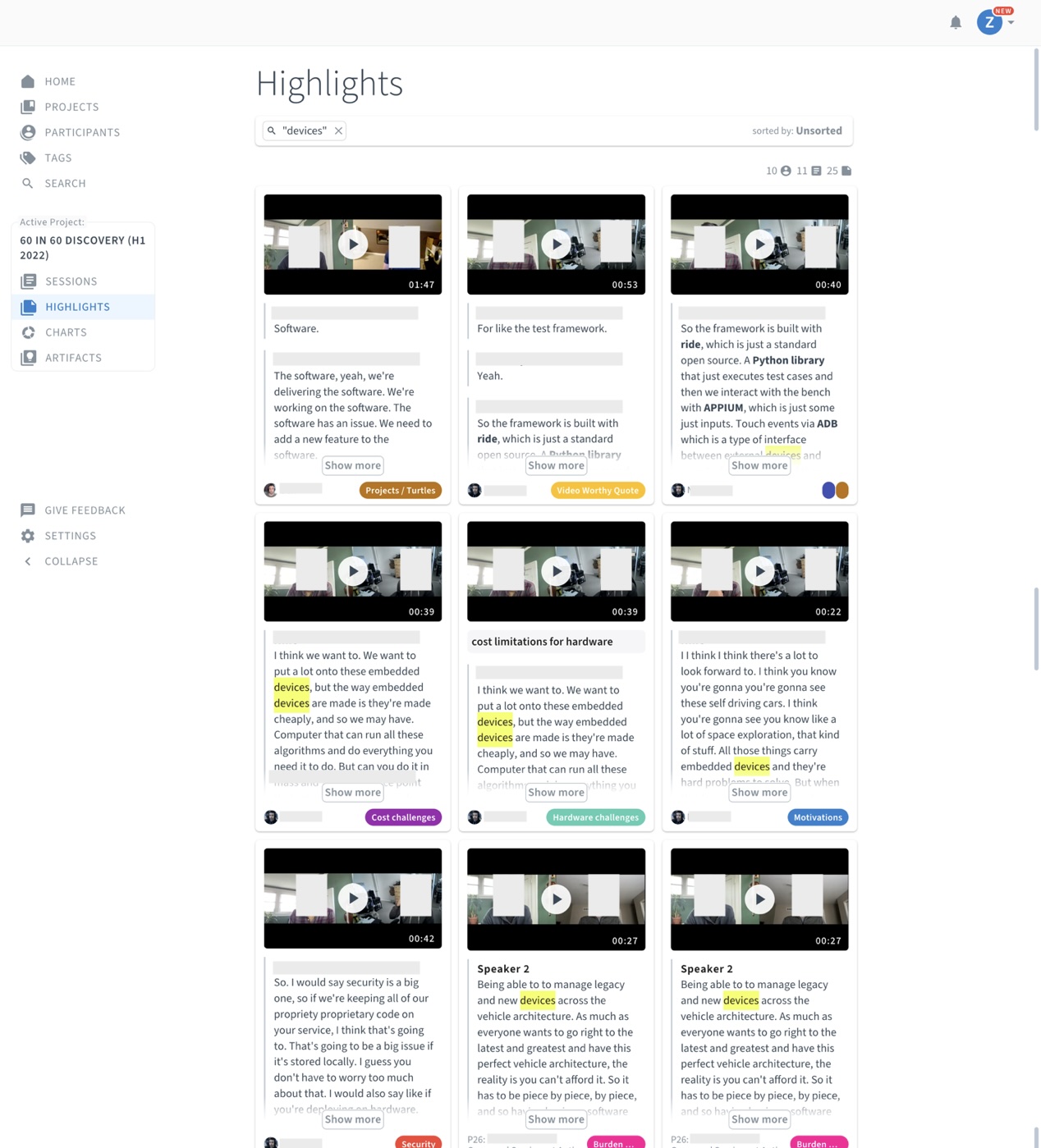
Creating a Design System
Taking the insights from our initial round of research, I led the UX team in establishing a design system to ensure consistency across products and accelerate design and development. The design system was built to consider the specific needs of each product, as well as general design goals such as 508c AA compliance, and capturing the essence of Wind River's heritage as a leader in embedded computing.
My Role
- Advocate across the organization about the importance of a design system
- Coordinate with Product and Engineering counterparts on prioritizing and implmenting the design system
- Allocate and manage UX team resources in consideration of other needs and priorities
- Collaborate on and provide feedback/guidance for design system deliverables